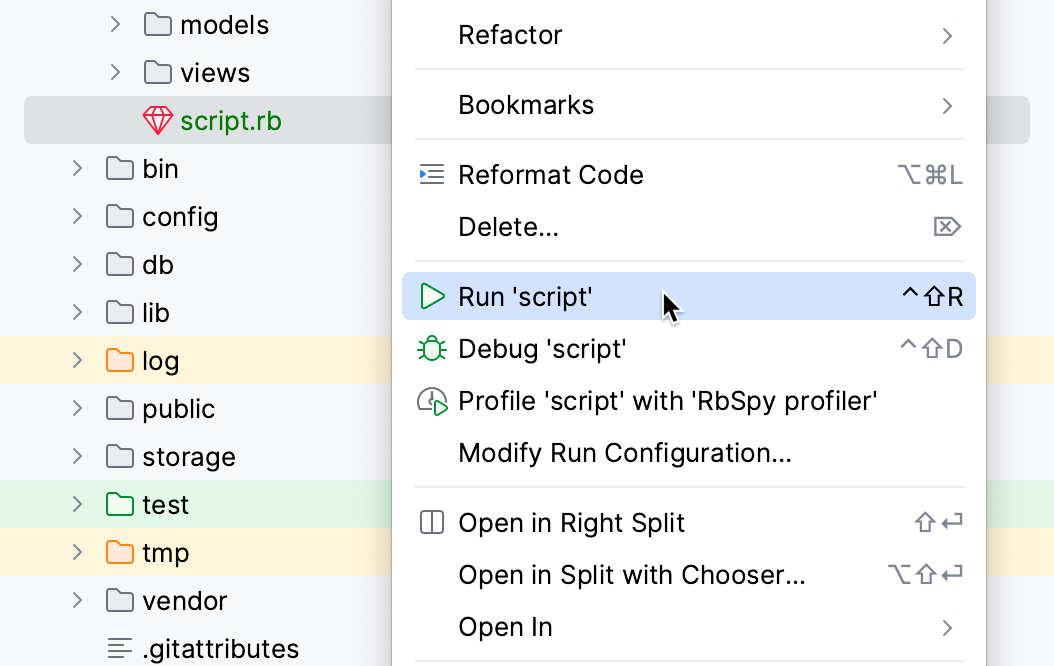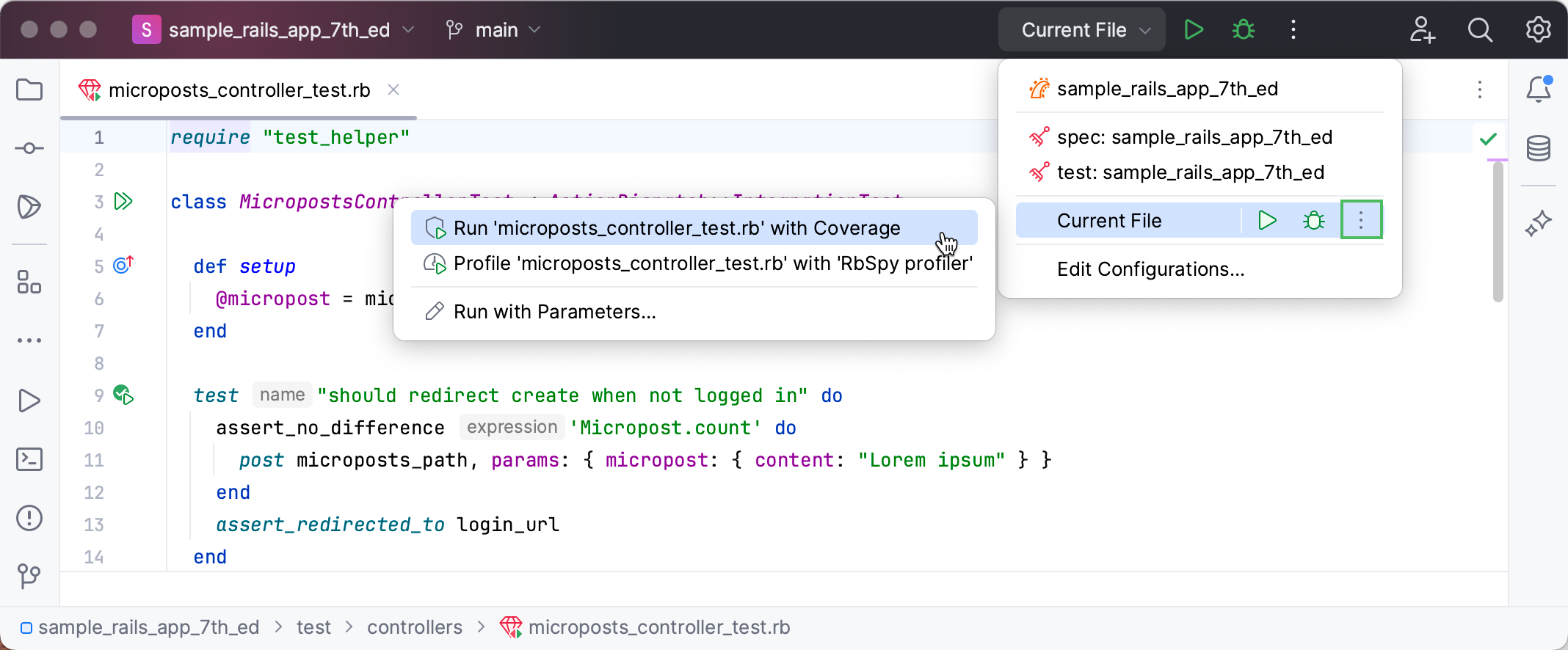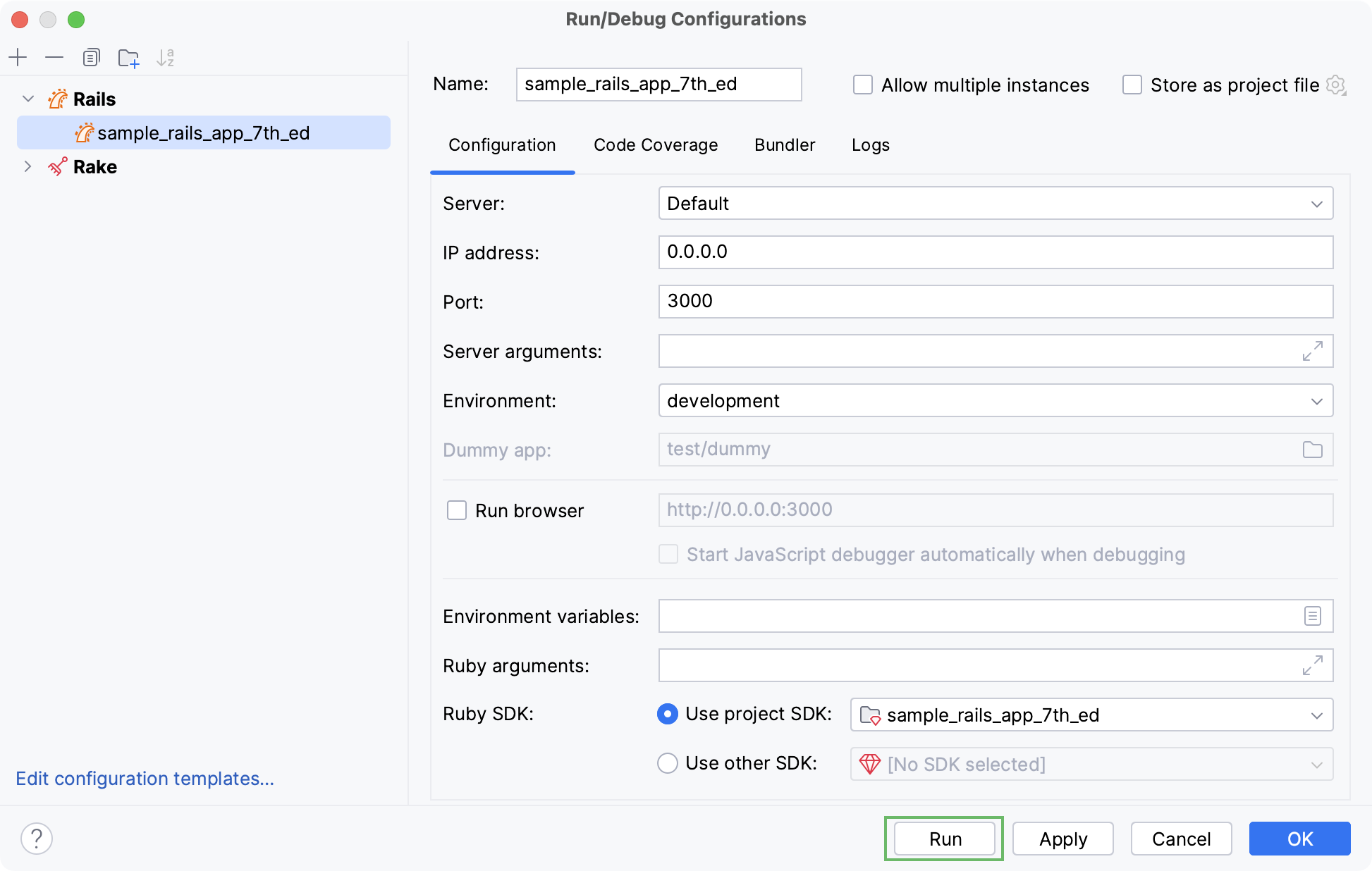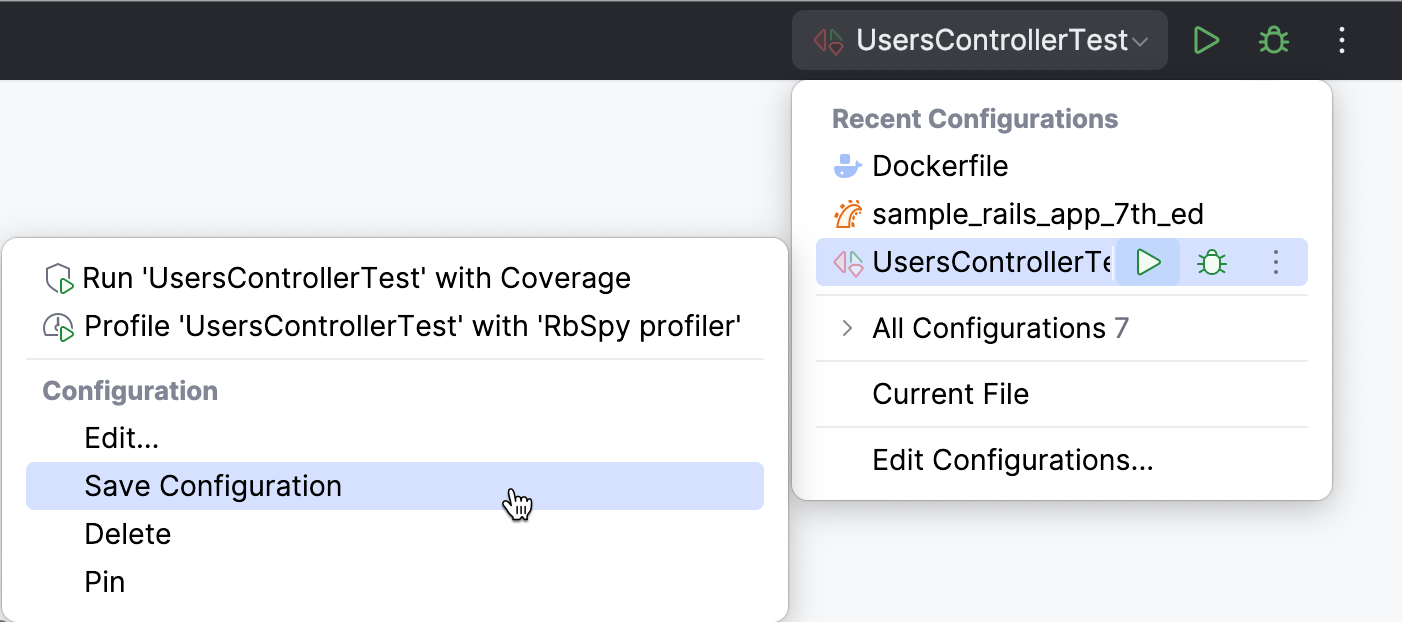Run applications
You can run applications right from RubyMine. Before you start, make sure to configure a Ruby interpreter for your project.
If you are not going to pass any parameters to your program, and your program does not require any specific actions to be performed before start, you can run it right from the editor.
To run a script, open it in the editor or select it in the Project tool window, and then select Run <script file name> from the context menu.

To run a test, click the gutter icon next to it or press CtrlShiftF10. The gutter icon changes depending on the state of your test, refer to Performing tests.
You can run single files using a dedicated option on the toolbar. The run and debug buttons are active and allow you to instantly run the currently opened file.
In the editor, open the file that you want to run.
Click
next to the Current File option on the toolbar.

You can access the other run modes by expanding the list. From the widget that opens, you can debug the code, run it with coverage, profile it, or open the run configuration to specify more options.

If you are going to pass parameters to your program, add VM options (for example, to allow remote debugging), or otherwise customize the startup of your program, use a run/debug configuration.
Edit and save a temporary configuration, or create a new run/debug configuration from a template and use one of the following options to run it:
Click Run from the Run/Debug Configurations dialog.

Select the configuration from the toolbar switcher and click
or press ShiftF10.

Press AltShiftF10 and select the configuration on the pop-up window that opens.
When the application starts, you can view its output and interact with it in the Run tool window. Every run/debug configuration creates a separate tab when you run it.
tip
Use the Ctrl0F shortcut to search for text occurrences in the console output.
For more information about tool windows and how to manage them, see the Tool windows topic.
On the toolbar of the Run tool window, click
or press ShiftF10.
tip
If you re-run an application, the output of the previous run is lost. To preserve the output of an application, click the Pin Tab button on the toolbar of the Run tool window. When a tab is pinned, new sessions are opened in another tab.
When you stop a program, its process is interrupted and exits immediately. When you pause a program, it continues running in the background, but its output is suspended.
In the Run tool window, click
on the toolbar. Alternatively, press CtrlF2 and select the process to stop.
Right-click in the Run tool window and select Pause Output from the context menu. Use the same toggle to resume the program.
note
Only the output is suspended. Pausing the output does not affect the execution of the program.
You can view the list of all active run or debug sessions and navigate between them.
Go to Run | Show Running List. In the top-right corner of the editor, RubyMine shows a list with all active applications.
Thanks for your feedback!